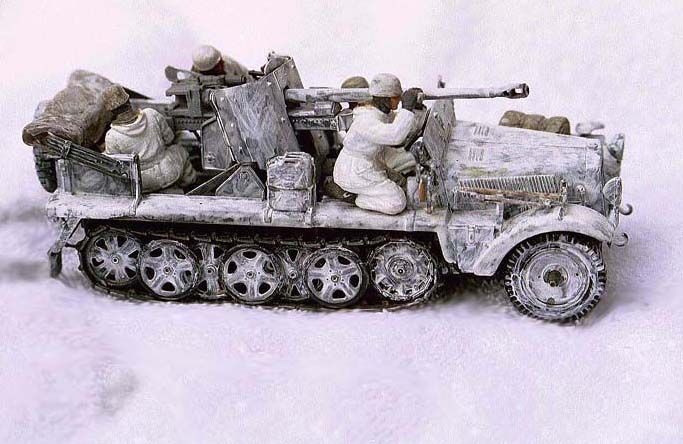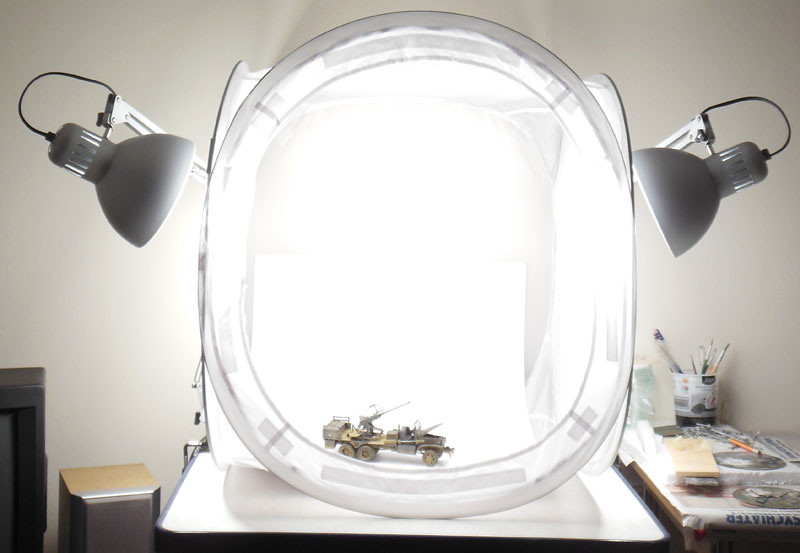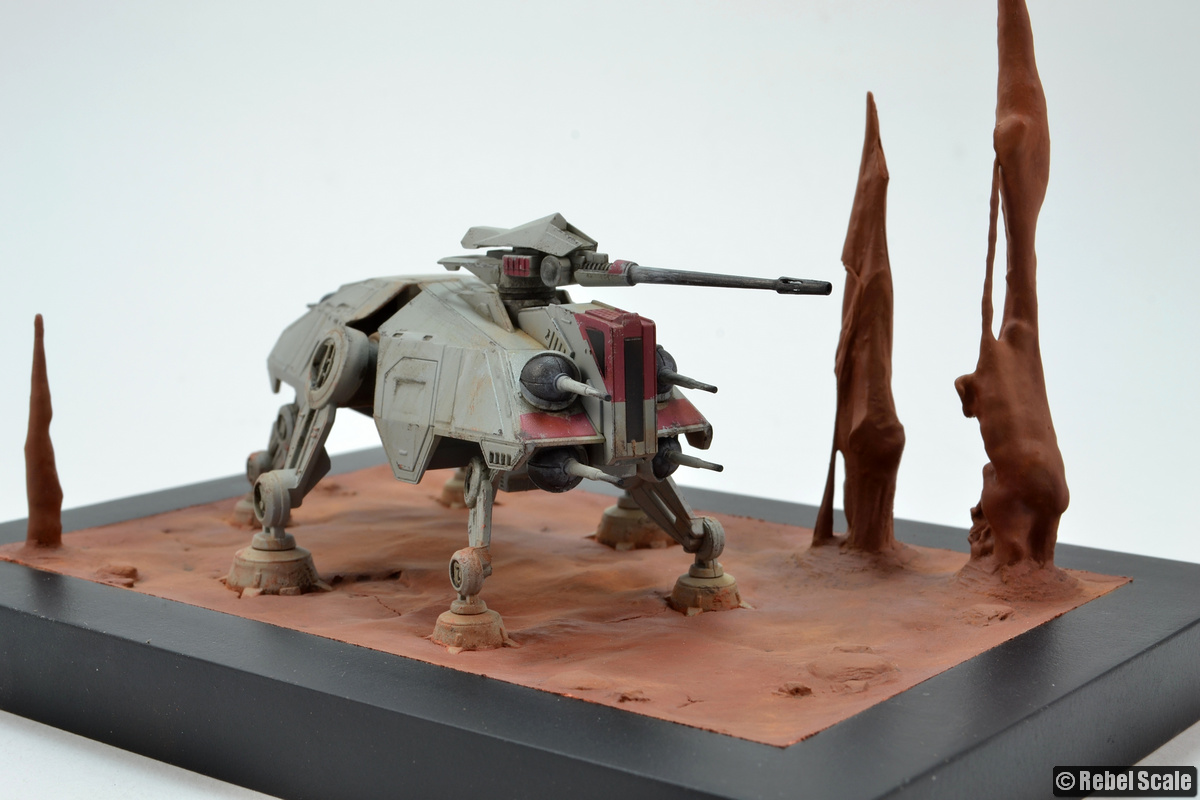My light setup:
===============
+ A cheap (30€) "studio lamp" with an integrated softbox and 135Watt-equivalent output. It is a 5500 Kelvin (daylight) lamp and the softbox works similar to Cristians light tent in diffusing it. This specific unit is a "buy if you use it indoors and do not plan to setup/breakdown daily/weekly" thing but "good enough for modelling shots". Using an E27 socket means I can get cheap replacement bulbs her in germany. This lamp gives basic illumination, allows for setup and use of the Autofocus.
+ Two Yongnuo ETTL-2 (Jup, red peril user here) flashes with two YN622C remote controls under the flashes and a TX622 on the camera. They are mounted on two Walimex flash tripods with reflex/throughlight umbrellas, Again the umbrellas soften/feather the light. This two provide background/fill lights. Rated at 5500Kelvin they are "close enough" to the fixed light. They can be color changed with "Lee filters" that I need for other occasions anyway say to give a reddish tint to the background. I use the flashed in "Strobist" setups in fotography anyway so I have them around and it beats buying another lamp as above
Camera/Equipment setup
======================
+ A cheap "picknick table" as a stand for the model. If I need more height I add a "folding storage box". Combined with A2 sized cardboard bent in a rounded L-shape for a background (typically white, Armorama yellow did NOT work well)
+ Sturdy all-metall Manfrotto Tripod with a ball head (Kugelkopf). Again overkill for modell fotography but "barely adequat" for some of the other stuff I do.
+ A cheap "macro sled" for focus stacking. Since I don't do macro fotography otherwise I have no need for a costly (and highly precise) unit so a 40€ unit and an hour with the "Proxon" to smooth the rough edges was "good enough". Mounted on the tripod with a PL200 quick change plate (People claim I collect those plates - heck I only own four...)
+ Some "Styrodur isolation tiles" (120x80cm) as reflectors if needed. Cheap and resonably sturdy
+ Some black cardboard and flexible foamboard as Gobos to block light etc.
+ Camera is an Canon EOS 80D (upgraded from a 60D when canon made me "an offer I could not refuse during a promotion event) and either a Sigma 18-35 or more likely a Tamron 24-70. Both camera and lenses are total overkill for this but I do a lot "available light" stuff in addition to strobist and the "APS-C Standard zoom" never worked for me/I do not own one anymore.
Workflow
========
I generally set up the model with (semi)overhead light from the lamp and take a test shot. Then I position flash(es) and/or reflector(s) to fill in the shadows or add to the main light.
Camera is in "M"anual mode, ISO 100 (or 200 if I use "enhanced tonal setting" of the Canon) and time is set to 1/160s (1/250s is the shortest flash sync time of a Canon and I like to add some "safety margin" for the radio trigger) for starters.
Appreture is set to f/8-f/11 for a start and will be increased up to f/16 on the Sigma (max appreture) or f/22 on the Tamron. I PREFER not to do that since APS-C sensors loose sharpness post f/11 and that gets visible post f/16. Due to the way the Canon flash system works the flashes will fill in the necessary light (In M mode the flashes become the "main light source" unlike Appreture/Time priority AV/TV where it is a fill light).
Shooting is RAW since I need to use post-processing anyway (Cameras can not compensate for third party lenses and my "lone Canon" is NOT a good "model shooting lense(1)) and post-correction is done in Lightroom 6 (up from 5 since Adobe does not support the 80D in LR5)
I make use of the "remote control" feature and LiveView a lot since the switch to the 80D (Hey, if you have THE LiveView Sensor in the DSLx market - use it

) and control the camera from my Windows tablet. Before that it was "ape on the grindstone" and I was bend over to the optical viewfinder of the 60D (that had a lousy live view(2) ). Was even considering a "Winkelsucher" (angled viewfinder? )
On a few occasions a "JPEG only/no post processing" request for pictures had me use the "Monochrome" function of the camera and even Cokin P-series clones colored filters to get an "aged" look (I have a cheap Cokin-P clone for the 5 pictures/year I need ND/ND grad filters and it came with some colored filters). Generally I use the NikCollection for adding "aged" effects to a picture.
(1) The "Yoghurt-Becher" (yoghurt cup) EF 50/f1.8 STM...
(2) Claims are that it is so slow if you take a picture a Golgotha today you will see the romans crucifying Jesus...































